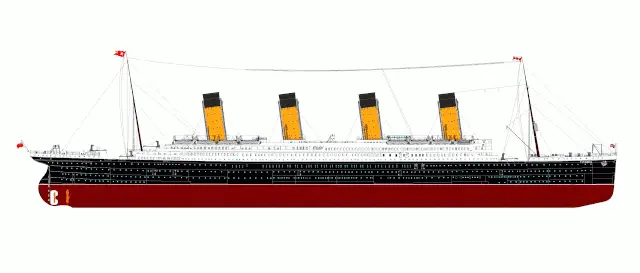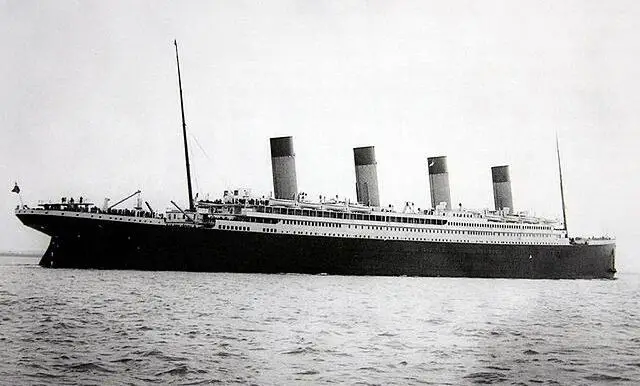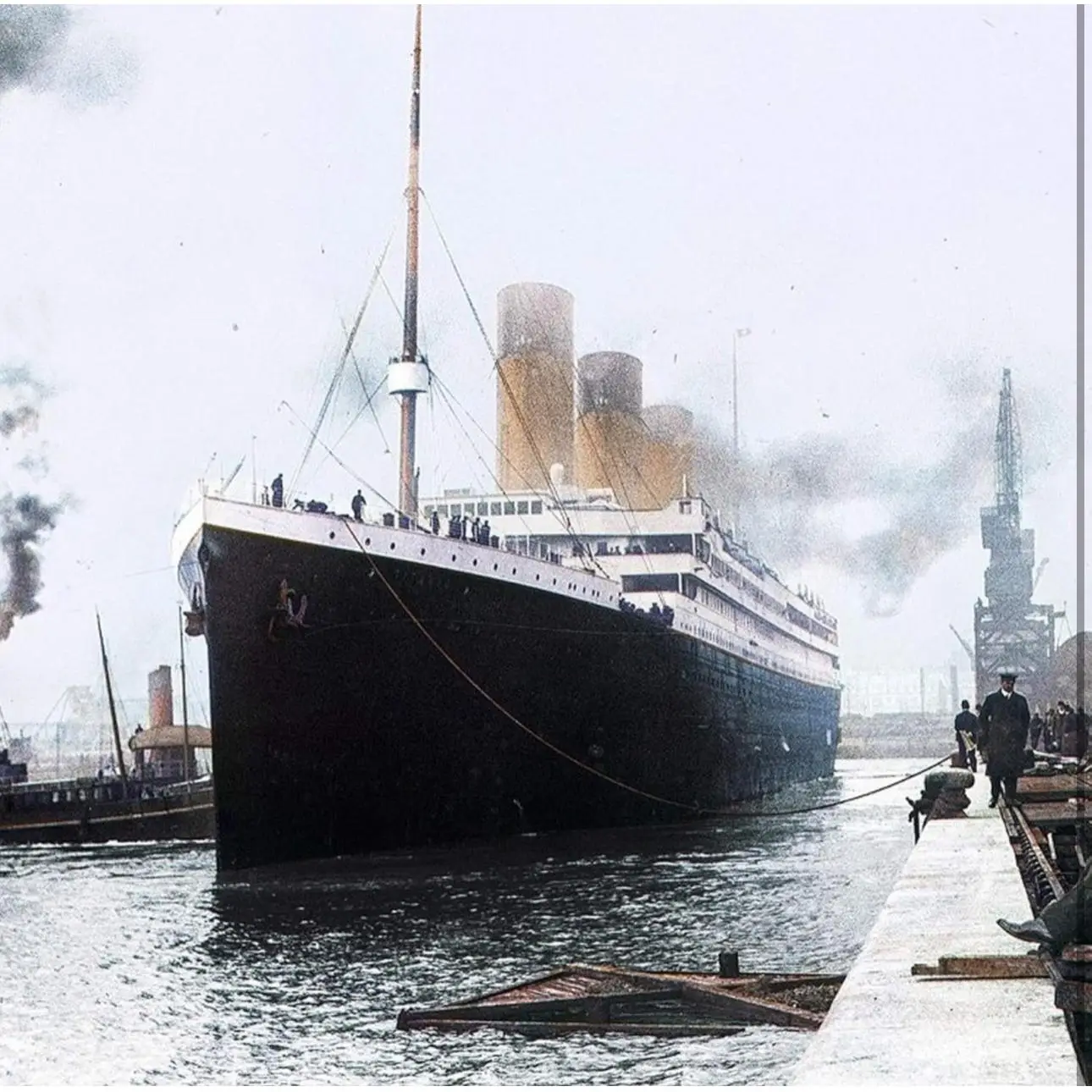The RMS Titanic, one of the most famous ships in history, was a British passenger liner that sank on its maiden voyage in the early hours of April 15, 1912. It was a disaster that captured the world’s attention and continues to be a subject of fascination over a century later. The Titanic was celebrated as the epitome of luxury and technological advancement, yet its tragic end serves as a poignant reminder of the perils of overconfidence and the forces of nature. This article delves into the Titanic’s history, design, ill-fated journey, and lasting legacy.
The Conception and Design of the Titanic
The Titanic was conceived in the early 1900s, during a time when transatlantic travel was becoming increasingly popular and competitive. The White Star Line, a prominent British shipping company, sought to outdo its rivals by constructing the largest and most luxurious passenger ships in the world. The Titanic was part of this ambitious plan, alongside her sister ships, the Olympic and the Britannic.

Construction of the Titanic began in 1909 at the Harland and Wolff shipyard in Belfast, Ireland. The ship was a marvel of engineering, stretching 882 feet in length and weighing approximately 46,000 tons. The Titanic’s designers, led by Thomas Andrews, aimed to create a vessel that was not only enormous but also exceptionally luxurious. The ship’s interiors were opulent, featuring grand staircases, elegant dining rooms, and lavish suites, designed to cater to the wealthy elite who would be traveling on board.
One of the most remarkable aspects of the Titanic’s design was its safety features. The ship was equipped with 16 watertight compartments, each separated by bulkheads. These compartments were intended to keep the ship afloat even if several were breached. This led to the belief that the Titanic was “unsinkable,” a claim that would prove tragically ironic.
The Maiden Voyage
The Titanic set sail on its maiden voyage from Southampton, England, on April 10, 1912, with stops planned in Cherbourg, France, and Queenstown (now Cobh), Ireland, before heading across the Atlantic to New York City. On board were over 2,200 passengers and crew members, representing a cross-section of society. The passengers ranged from wealthy industrialists and celebrities to immigrants seeking a new life in America.

The journey was largely uneventful for the first few days. The Titanic’s passengers enjoyed the ship’s luxurious amenities, which included a swimming pool, a gymnasium, and fine dining. The crew, meanwhile, was confident in the ship’s ability to complete the voyage without incident.
However, despite the ship’s advanced design, several critical decisions would contribute to the disaster that unfolded. The ship’s wireless operators received multiple warnings of icebergs in the area, but these warnings were not heeded with the urgency they required. The ship was also traveling at nearly full speed, a decision influenced by a desire to arrive in New York ahead of schedule and to demonstrate the Titanic’s capabilities.
The Sinking of the Titanic
On the night of April 14, 1912, the Titanic was sailing through the frigid waters of the North Atlantic. The sea was unusually calm, and the night was moonless, making it difficult to spot icebergs. At approximately 11:40 p.m., a lookout spotted an iceberg directly in the ship’s path. The officer in charge, First Officer William Murdoch, ordered the ship to turn hard to starboard and the engines to be reversed. Despite these efforts, the Titanic struck the iceberg on its starboard side.
The impact caused a series of ruptures along the hull, flooding five of the ship’s 16 watertight compartments. Although the Titanic was designed to stay afloat with up to four compartments flooded, the breach of a fifth compartment sealed its fate. Water began to pour into the ship at an alarming rate, and it soon became clear that the Titanic was doomed.
The ship’s crew immediately began to prepare the lifeboats for launch. However, there were not enough lifeboats to accommodate everyone on board. The Titanic was equipped with only 20 lifeboats, which could hold about 1,178 people—just over half of the passengers and crew. This shortage was a result of outdated maritime regulations and the belief that the ship was unsinkable.
The evacuation process was chaotic and poorly managed. Lifeboats were launched with far fewer people than their capacity, as many passengers hesitated to leave the perceived safety of the ship. Women and children were given priority, but many men were left behind, and entire families were separated in the confusion. As the ship began to list, the situation became increasingly desperate.
By 2:20 a.m., just over two and a half hours after striking the iceberg, the Titanic broke apart and sank into the icy waters. More than 1,500 people perished in the disaster, either trapped on board or succumbing to the freezing temperatures in the water. Only about 700 people survived, most of whom were rescued by the RMS Carpathia, which arrived at the scene several hours later.
Aftermath and Investigations
The sinking of the Titanic sent shockwaves around the world. The disaster dominated headlines and led to widespread mourning for the lives lost. In the immediate aftermath, inquiries were launched in both the United States and the United Kingdom to investigate the causes of the sinking and to prevent such a tragedy from happening again.
The investigations revealed a number of contributing factors to the disaster. The most glaring was the lack of lifeboats, which highlighted the inadequacy of maritime safety regulations at the time. The inquiries also criticized the failure to heed iceberg warnings, the ship’s high speed, and the lack of proper evacuation procedures.
One of the outcomes of these inquiries was the establishment of the International Convention for the Safety of Life at Sea (SOLAS) in 1914, which set new standards for maritime safety. These included requirements for sufficient lifeboats, improved life-saving equipment, and better communication protocols. The Titanic disaster also led to the formation of the International Ice Patrol, which monitors iceberg dangers in the North Atlantic.
The Titanic’s Cultural Legacy
The story of the Titanic has been immortalized in popular culture, becoming a symbol of human ambition, tragedy, and resilience. Countless books, documentaries, and films have been produced about the ship and its fateful voyage, the most famous being James Cameron’s 1997 blockbuster movie “Titanic.” The film, which combined a fictional love story with historical events, became a global phenomenon and reignited interest in the Titanic’s history.
Artifacts recovered from the wreckage, which was discovered in 1985 by oceanographer Robert Ballard, have been displayed in museums around the world, further fueling public fascination with the ship. These artifacts, ranging from personal belongings to pieces of the ship itself, offer a poignant connection to the people who were on board and the lives that were lost.
The Titanic’s story has also inspired numerous memorials and tributes, including statues, plaques, and museums dedicated to preserving the memory of the ship and its passengers. The ship’s legacy continues to resonate, serving as a reminder of the fragility of life and the importance of humility in the face of nature’s power.








Leave a Comment
Your email address will not be published. Required fields are marked *